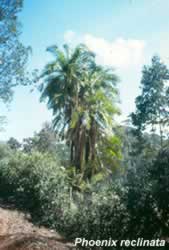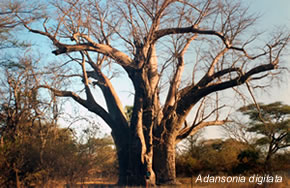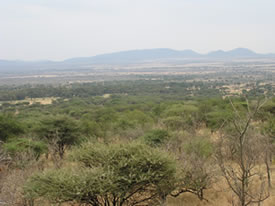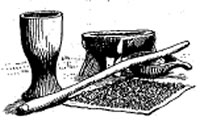To search for trees useful to agroforestry, click on the "Trees" link in the left menu bar.
|
|
|||||
|
When it comes to trees, Kenya is a rich land. According to the botanical reference, Kenya Trees and Shrubs, published by the National Museum, Kenya has over 1100 species of trees. |
||||||
|
This
is due in part to the wonderfully diverse habitats in the country, extending
from the dry, barren regions of Lake Turkana and Mandera, to the lush high
country around Mount Kenya and the Rift Valley highlands.
Kenya
is also poor, due to poor resource management extending back to the colonial
days and government actions of the immediate past, the country has seen
extensive environmental degradation, habitat conversion and loss of forest
cover. This has left the land vulnerable to erosion and drought, and the people
with fewer resources for their survival. The forest, and the trees, have not
received due credit for their contribution to the land. Trees protect soil,
provide food and protection for people and animals, fuel for cooking, medicine,
fiber, mulch, green manure, fencing, and much more. Losing these services has
cost Kenya greatly.
|
|
|||||
|
|
At
the same time there is hope, a hope rising from people acting at the local
level. Not long ago the people of Machakos faced declining tree resources,
increasing soil erosion, and loss of water. Something had to be done, and was.
The countryside of the Kamba people now has more trees, lower erosion, and
better water supply than it did 20 years ago, and the credit goes to local
residents. They planted trees, instituted new land and livestock management
strategies, improved erosion control methods, and built sub-surface dams and
spring protection systems, all of which contributed to improved local
environments.
|
|||||
|
This
achievement can be repeated throughout Kenya, and even more broadly in Africa.
This website intends to be a small part of that process, providing an
electronic resource for information about trees. This website was developed
from material produced in association with KENGO, MCC Kenya, and numerous other
organizations and people involved in growing trees in the country in the
1980's. The first attempt to provide this information was in a small book
called A Pocket Directory of Trees and Seeds in Kenya by
Wayne Teel, with illustrations by Terry Hirst.
|
|
|||||
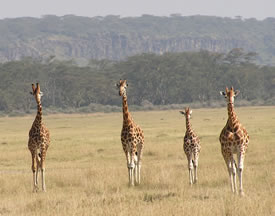 © Dr. Joe Marchal |
Since
then, new illustrations and more information have become available, and we want
it shared as broadly as possible, with no expense. The website is under
construction with materials produced by Wayne Teel, now a professor at
James Madison University in the USA, and illustrated
by Terry Hirst. This website was developed with the participation of Haruhiko
Kutsukake, William Reichert, and Renee Parilak, and is hosted by James Madison
University.
Copying
and using this material is encouraged, we just ask that you credit the source.
|
|||||
